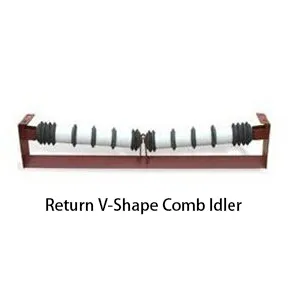 Afrikaans
Afrikaans  Albanian
Albanian  Amharic
Amharic  Arabic
Arabic  Armenian
Armenian  Azerbaijani
Azerbaijani  Basque
Basque  Belarusian
Belarusian  Bengali
Bengali  Bosnian
Bosnian  Bulgarian
Bulgarian  Catalan
Catalan  Cebuano
Cebuano  Corsican
Corsican  Croatian
Croatian  Czech
Czech  Danish
Danish  Dutch
Dutch  English
English  Esperanto
Esperanto  Estonian
Estonian  Finnish
Finnish  French
French  Frisian
Frisian  Galician
Galician  Georgian
Georgian  German
German  Greek
Greek  Gujarati
Gujarati  Haitian Creole
Haitian Creole  hausa
hausa  hawaiian
hawaiian  Hebrew
Hebrew  Hindi
Hindi  Miao
Miao  Hungarian
Hungarian  Icelandic
Icelandic  igbo
igbo  Indonesian
Indonesian  irish
irish  Italian
Italian  Japanese
Japanese  Javanese
Javanese  Kannada
Kannada  kazakh
kazakh  Khmer
Khmer  Rwandese
Rwandese  Korean
Korean  Kurdish
Kurdish  Kyrgyz
Kyrgyz  Lao
Lao  Latin
Latin  Latvian
Latvian  Lithuanian
Lithuanian  Luxembourgish
Luxembourgish  Macedonian
Macedonian  Malgashi
Malgashi  Malay
Malay  Malayalam
Malayalam  Maltese
Maltese  Maori
Maori  Marathi
Marathi  Mongolian
Mongolian  Myanmar
Myanmar  Nepali
Nepali  Norwegian
Norwegian  Norwegian
Norwegian  Occitan
Occitan  Pashto
Pashto  Persian
Persian  Polish
Polish  Portuguese
Portuguese  Punjabi
Punjabi  Romanian
Romanian  Russian
Russian  Samoan
Samoan  Scottish Gaelic
Scottish Gaelic  Serbian
Serbian  Sesotho
Sesotho  Shona
Shona  Sindhi
Sindhi  Sinhala
Sinhala  Slovak
Slovak  Slovenian
Slovenian  Somali
Somali  Spanish
Spanish  Sundanese
Sundanese  Swahili
Swahili  Swedish
Swedish  Tagalog
Tagalog  Tajik
Tajik  Tamil
Tamil  Tatar
Tatar  Telugu
Telugu  Thai
Thai  Turkish
Turkish  Turkmen
Turkmen  Ukrainian
Ukrainian  Urdu
Urdu  Uighur
Uighur  Uzbek
Uzbek  Vietnamese
Vietnamese  Welsh
Welsh  Bantu
Bantu  Yiddish
Yiddish  Yoruba
Yoruba  Zulu
Zulu rubber conveyor rollers
The Essential Role of Rubber Conveyor Rollers in Material Handling
In the modern industrial landscape, efficient material handling is crucial for success in various sectors, from manufacturing to logistics. One essential component that plays a vital role in this process is the rubber conveyor roller. These rollers are integral to conveyor systems, designed to transport goods and materials from one location to another with speed and efficiency. This article delves into the importance, benefits, applications, and maintenance of rubber conveyor rollers.
Rubber conveyor rollers are specifically designed to handle the diverse challenges encountered in transporting materials. Unlike traditional metal rollers, rubber rollers feature a coating of rubber that enhances their performance and durability. The rubber surface provides superior grip, minimizing the risk of slippage and ensuring that items move smoothly along the conveyor belt. This is particularly important in operations where steep inclines or declines are present, as it prevents materials from rolling backward.
One significant advantage of rubber conveyor rollers is their ability to reduce noise levels during operation. In industrial settings, excessive noise can lead to a stressful working environment and can also violate noise regulations. Rubber rollers absorb vibrations and dampen sounds, creating a quieter, more pleasant atmosphere for workers. Additionally, the rubber material helps to reduce the wear and tear on the conveyor belt, prolonging its lifespan and minimizing maintenance costs.
Another benefit of rubber conveyor rollers is their versatility. They can be utilized in a wide range of industries, including mining, agriculture, manufacturing, and packaging. In mining operations, for example, rubber rollers are used to transport heavy loads of ore and aggregate, while in packaging, they help move products along assembly lines. Their adaptability makes them an essential component across various applications, contributing to the overall efficiency of material handling systems.
rubber conveyor rollers

In addition to their usage in different industries, rubber conveyor rollers come in various designs and sizes to meet specific operational needs. Depending on the weight, size, and nature of the materials being transported, businesses can select rollers with different diameters, lengths, and rubber hardness levels. This customization allows companies to optimize their conveyor systems for maximum performance.
However, like any component, rubber conveyor rollers require regular maintenance to ensure optimal performance and longevity. Routine inspections are crucial to identify signs of wear, misalignments, or damage. Keeping the rollers clean and free of debris is also essential, as dirt and grime can hinder their functionality and contribute to faster wear. Businesses should also monitor the tension of the conveyor belt, as improper tension can lead to roller damage.
In conclusion, rubber conveyor rollers are a critical component in the efficiency of material handling systems across various sectors. Their unique properties not only improve grip and reduce noise but also extend the life of conveyor belts. By investing in high-quality rubber rollers and adhering to a regular maintenance schedule, companies can enhance their operational efficiency, minimize downtime, and ultimately improve their bottom line. As industries continue to evolve and demand more sophisticated material handling solutions, the importance of rubber conveyor rollers will only continue to grow.
In an increasingly competitive marketplace, understanding the role and benefits of rubber conveyor rollers can empower businesses to make informed decisions, leading to improved productivity and cost savings. As such, these rollers are not just a specification on machinery; they represent a critical factor in achieving operational excellence and staying ahead in today's fast-paced industrial environment.
-
Taper Centering Idler Set for Conveyor SystemsNewsJun.25,2025
-
Small Idler Rollers for Industrial ConveyorsNewsJun.25,2025
-
Guide Training Idler Set for Conveyor MaintenanceNewsJun.25,2025
-
Friction Offset Idler Set for Industrial UseNewsJun.25,2025
-
Double-Center-Roller Idler AlignmentNewsJun.25,2025
-
Channel Inset Impact Troughing Idler Set for Heavy LoadsNewsJun.25,2025





























